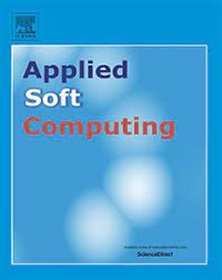Graph convolutional networks with multi-scale dynamics for traffic speed forecasting
IF 7.2
1区 计算机科学
Q1 COMPUTER SCIENCE, ARTIFICIAL INTELLIGENCE
引用次数: 0
Abstract
Accurate traffic speed forecasting remains challenging due to complex and variable road conditions. Prior research often overlooks both coarse-grained and fine-grained features in traffic data, hindering a comprehensive capture of traffic data's temporal dependencies. While graph convolutional networks (GCNs) are commonly employed to extract spatial dependencies in traffic networks, they typically view these networks from a static standpoint, failing to consider the dynamic nature of traffic network structures. This limitation restricts their effectiveness in modeling traffic networks. To address these issues, this study introduces a novel deep learning-based spatial-temporal model for precise traffic speed forecasting. This model incorporates a newly developed multi-scale transformation method, which enhances the coarse-grained and fine-grained features in traffic speed data by transforming and fusing traffic speed data, and enabling a more thorough modeling of its temporal dependencies. Additionally, we propose an innovative graph interaction strategy, combines the generated graphs with a dynamic graph convolutional network, to effectively mine the dynamic characteristics of traffic network structures, thereby enhancing the model's accuracy. Extensive experiments on two real-world datasets have demonstrated the robustness and superior performance of the proposed model, with improvements ranging from 2.2 % to 6.1 % over state-of-the-art baselines.
求助全文
约1分钟内获得全文
求助全文
来源期刊

Applied Soft Computing
工程技术-计算机:跨学科应用
CiteScore
15.80
自引率
6.90%
发文量
874
审稿时长
10.9 months
期刊介绍:
Applied Soft Computing is an international journal promoting an integrated view of soft computing to solve real life problems.The focus is to publish the highest quality research in application and convergence of the areas of Fuzzy Logic, Neural Networks, Evolutionary Computing, Rough Sets and other similar techniques to address real world complexities.
Applied Soft Computing is a rolling publication: articles are published as soon as the editor-in-chief has accepted them. Therefore, the web site will continuously be updated with new articles and the publication time will be short.
 求助内容:
求助内容: 应助结果提醒方式:
应助结果提醒方式:


